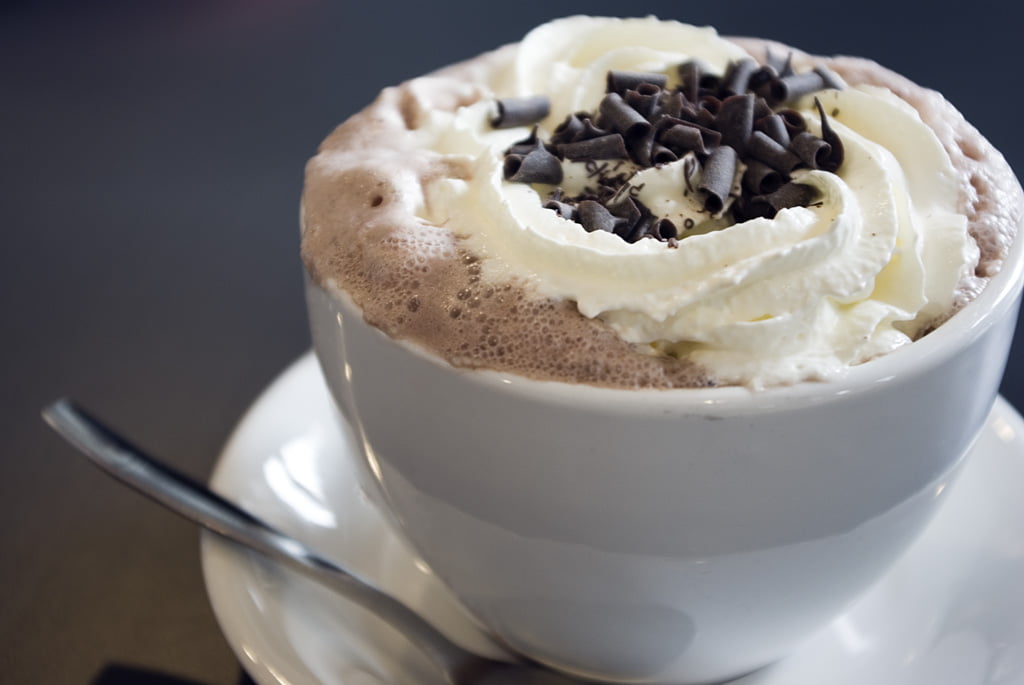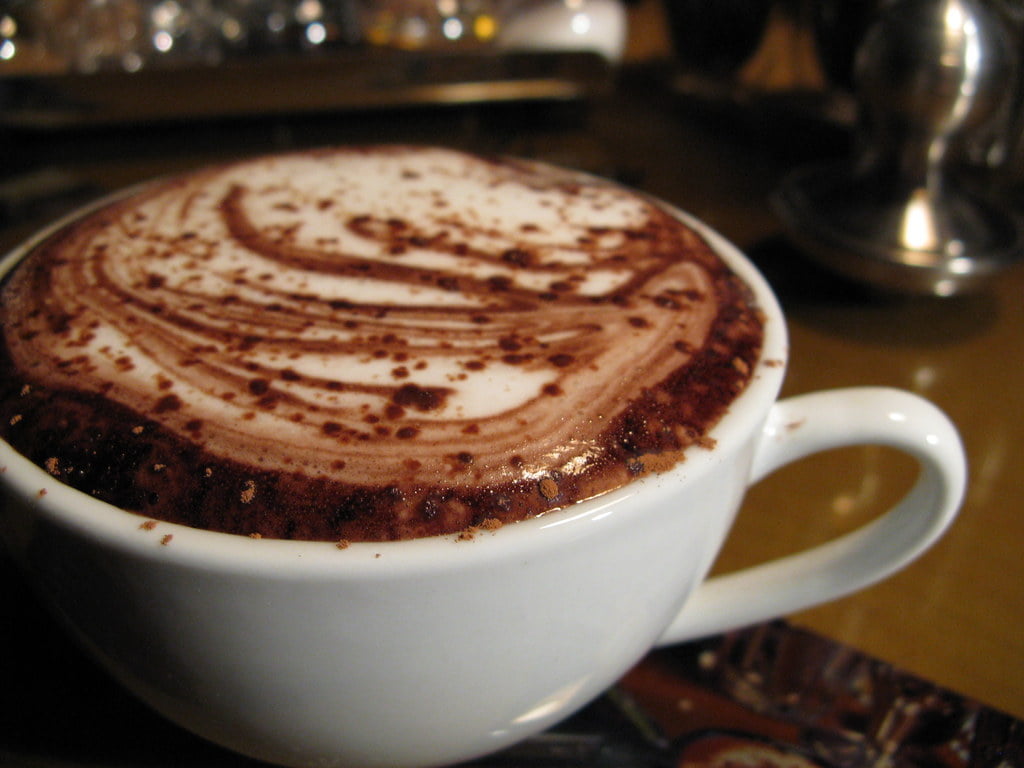This delectable treat is appreciated by many worldwide, but the origins of this delicious indulgence can be traced back centuries. It all began in Mesoamerica, where native peoples transformed cocoa beans into a drink. This refreshment eventually developed into the beloved hot chocolate we savor today. With improvements such as Dutch processing and the emergence of cocoa powder and chocolate bars, the production and consumption of hot chocolate have adapted over time. This article will explore the chronology and alteration of hot chocolate and other related cocoa-based drinks.
The Origins of Chocolate
In ancient Mesoamerica, cocoa-based drinks were consumed around 1900 BC to 1500 BC. The Mayans concocted a blend of ground cocoa beans, water, cornmeal, chili peppers, and other ingredients to make a warm drink that was enjoyed by many. The Aztecs also cherished a similar glass, called xocolatl, and it was frequently used in rituals and ceremonies.
Cacao beans were also used as a form of payment during the pre-Columbian era. The Dutch significantly advanced chocolate production in the mid-18th century with the discovery of cocoa powder. Coenraad van Houten, a Dutch chemist, introduced a process known as Dutching in 1828. This process treated cocoa beans with alkaline salts to make an acceptable form of chocolate. This invention made it easier to mix chocolate with water, and thus, it became a popular item worldwide. Thomas Jefferson also prophesized that this new drink would be as sought-after as tea or coffee!

Aztecs and Mayans Drink Chocolate Beverages
The origins of cocoa bean consumption can be traced to around 1900 BC to 1500 BC when the Mayans and Aztecs began imbibing a beverage made from fermented cocoa beans. This concoction was prepared with ground cocoa beans, water, cornmeal, chilies, and other components. The Mayan and Aztec civilizations held this beverage in high regard, and it was believed to possess medicinal and spiritual qualities.
The popularity of this drink was so great that it was even employed as currency in some parts of Mesoamerica. Moreover, the Mayans and Aztecs had a variety of recipes that incorporated cocoa beans, and they even utilized the beans to make a kind of paste. Some of these recipes are still used, although they have been modified to suit modern flavor preferences.
The cocoa bean beverages that the Aztecs and Mayans consumed were popular and served as a symbol of power and esteem. The Mayans and Aztecs drank these drinks to honor their gods, believing it brought them closer to divinity. The importance of cocoa beans and cocoa bean-based beverages to the Mayans and Aztecs was so great that it was even featured in their mythology.
The recipes and beverages made by the Mayans and Aztecs remain in use today, with some used to craft modern-day chocolate products. The ancient recipes are still sought after by chocolatiers and chocolate fanatics, and the wisdom of the Mayan and Aztec civilizations is kept alive through these old recipes.
The Emergence of Cocoa Powder
In the mid-1700s, the Dutch developed a process known as ‘Dutching’ to treat cacao beans with alkaline salts. This enabled them to create a powdered form of the beans, which could be more readily mixed with water. This breakthrough opened the door to many new chocolate-based creations, including cocoa powder.
Cocoa powder is an incredibly versatile ingredient for various desserts and drinks. It is produced by grinding cocoa beans and removing the fattest (cocoa butter). The result is a deep, dark-brown powder with a distinctive cocoa smell and taste.
The invention of cocoa powder gave rise to the production of many novel and exciting chocolaty treats. Manufacturers could now make chocolate drinks with a smoother texture and richer flavor. Chocolatiers started creating chocolate bars, cakes, and other confections incorporating cocoa powder. The invention of cocoa powder allowed chocolate to be utilized in many ways, from baking to making hot beverages.
Cocoa powder was a revolutionary invention that changed how people consumed and enjoyed chocolate. It is still used in many recipes, from hot drinks to cakes and cookies. Cocoa powder is an incredibly versatile ingredient that can be added to savory and sweet dishes. Its unique flavor and aroma make it essential to any chocolatier’s kitchen.

Hot Chocolate Preparation and Consumption
A comforting and warming drink that all ages can appreciate, this creamy delight is made by melting chocolate bars into the cream. To ensure that the final product is perfect, it is essential to melt the chocolate slowly over low heat and continually stir. After the chocolate is completely melted, it should be mixed with the cream and started until it appears smooth. Add the cream gradually and go continuously to avoid the hot beverage from becoming too thin. Lastly, the hot drink should be served with a desired topping, such as whipped cream, marshmallows, or cinnamon.
This popular beverage is a beautiful way to wind down after a long day or to stay cozy on a cold one. It can also be used in muffins, cakes, and puddings. Additionally, it can be transformed into mocha, a coffee-flavored variation, by mixing in espresso or strong coffee. To make the drink even more indulgent, some people add a spoonful of nut butter or marshmallow fluff to the cup. This beloved drink can also be made with an alternative milk, such as almond, oat, or soy milk, for lactose intolerant or those who wish to avoid dairy.
This versatile concoction can be customized to fit any tastebud. This delectable drink will please, whether enjoyed plain or with an extra kick. Anyone can make a unique hot beverage with just a few simple steps. So, grab some chocolate, cream, and a topping of your choice and indulge in this sweet treat.
The Benefits of Drinking Hot Chocolate
Sipping a cup of soothing cocoa is an indulgent pleasure with many positive benefits for the body and psyche. Not only does it taste delightful, but research has also revealed that this treatment can help alleviate stress, improve mental alertness, and even enhance immunity. Studies have shown that drinking cocoa can sharpen focus, recollection, and understanding and augment cognitive performance. Rich in antioxidants, this drink may fortify the body’s defenses against illnesses and viruses. Furthermore, its pleasant scent can trigger the release of endorphins, which can have a calming effect and deliver a blissful emotional state.
Cocoa can also provide a relaxing and comforting sensation, particularly in the colder months. The warmth of the drink can help stimulate circulation and soothe the body. In addition, magnesium in cocoa helps relieve tense muscles and nerves, allowing for better sleep. Therefore, drinking cocoa can be beneficial not only for the body but also for the spirit. People who savor a cup of this beverage can enjoy its calming effects and possible health advantages.
Conclusion
Cacao is a treat with a long and storied past, since its inception by the Mayans and Aztecs. This delightful concoction has become a staple in many societies, from the Dutch invention of processed cocoa to the large-scale production of candy bars. Not only does it have a lovely taste, but also it comes with a bounty of health benefits. The journey of this delightful treat is fascinating, and its story will continue to be written.
Over time, how this delightful treat is consumed has evolved. From its humble beginnings as a Mayan and Aztec beverage, it has become a popular drink globally. Consumers of all ages savor the rich flavor and enjoy the antioxidant-rich ingredients. The narrative of this delightful indulgence is sure to persist for many years in the future.
